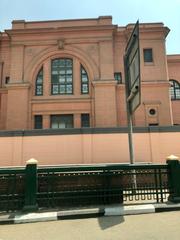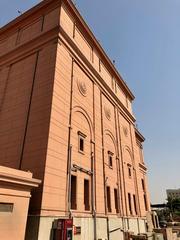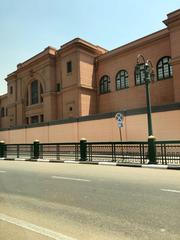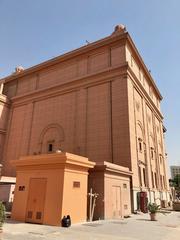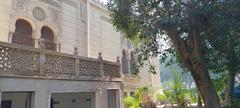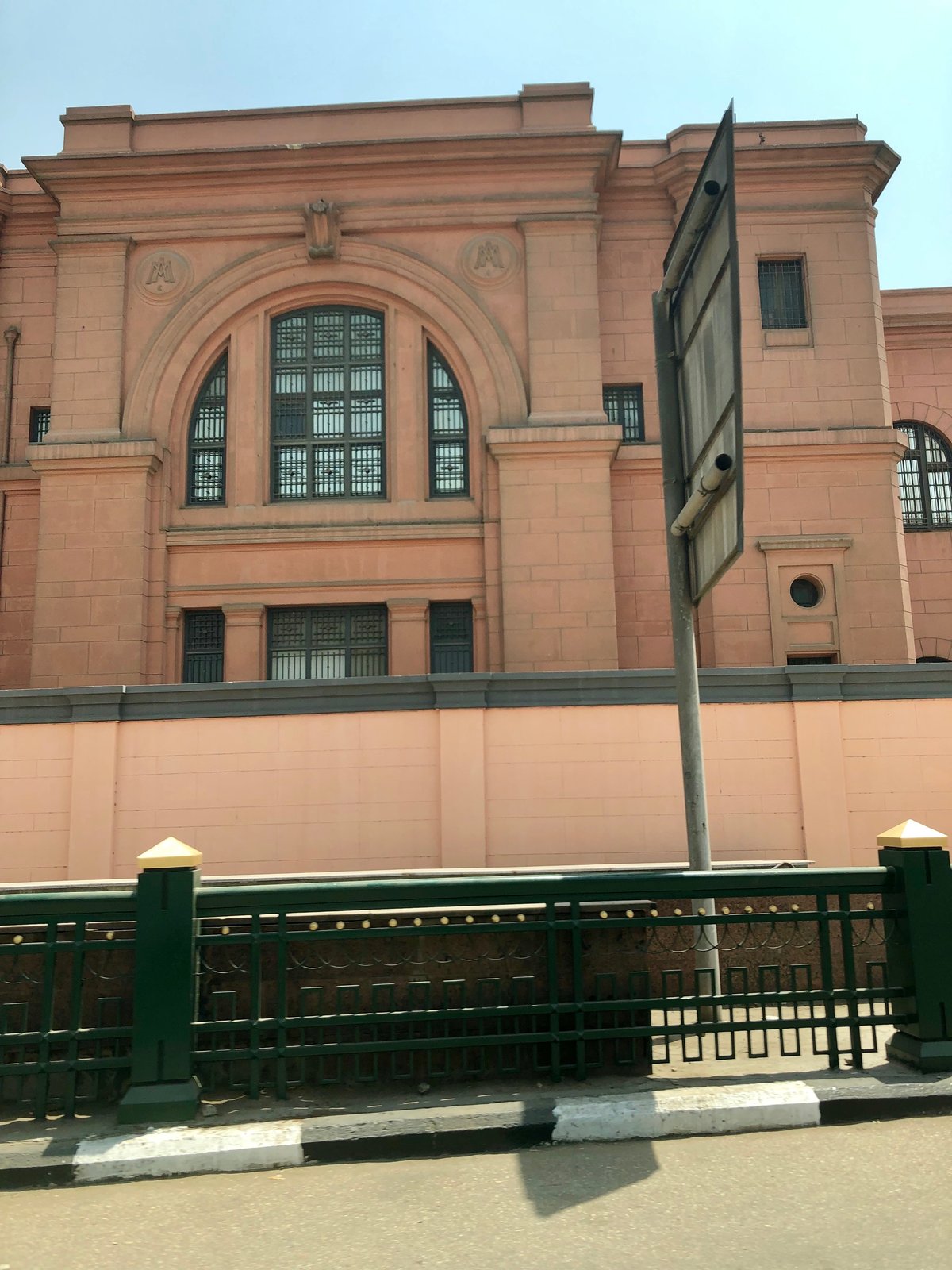
Egyptian Museum Cairo Visiting Hours, Tickets, and Travel Guide
Date: 14/06/2025
Introduction to the Egyptian Museum in Cairo
The Egyptian Museum in Cairo, also known as the Museum of Egyptian Antiquities, is an essential destination for anyone passionate about ancient Egypt. Founded in the 19th century and designed by Marcel Dourgnon, this neoclassical landmark in Tahrir Square houses over 120,000 artifacts spanning more than 5,000 years. Its collection, including Tutankhamun’s iconic funerary mask, royal mummies, and monumental statues, provides an unparalleled window into Egypt’s dynastic past (Discover Walks; Britannica; Egypt Planners).
As the Grand Egyptian Museum (GEM) prepares to open near the Giza Pyramids in July 2025, a new chapter in Egyptian museology begins. GEM’s state-of-the-art exhibits and comprehensive reunification of Tutankhamun’s treasures will complement the historic role of the original museum, introducing advanced technologies and immersive experiences (Luster Magazine; My Odyssey Tours).
This guide provides everything you need to plan a successful visit, including historical context, architectural highlights, must-see artifacts, practical visitor information, and tips for navigating both museums. Whether you’re a history buff, a casual explorer, or planning a cultural journey, you’ll find essential details to make your Cairo experience unforgettable (Egypt United Tours; Travel2Egypt).
History and Architecture of the Egyptian Museum
Historical Evolution
The Egyptian Museum’s roots trace back to 1835, when Egypt’s first effort to protect antiquities began in Ezbekieh Garden. The growing collection moved several times—first to the Citadel, then to Bulaq (under Auguste Mariette), and ultimately to Giza, before finding a permanent home in Tahrir Square. An international competition led to Marcel Dourgnon’s neoclassical design, and the museum officially opened in 1902 under Khedive Abbas Helmy II (Travel2Egypt; Egypt United Tours; Britannica).
Architectural Features
- Neoclassical and Beaux-Arts Style: The museum’s symmetrical façade, grand columns, and dignified entrance reflect Beaux-Arts influences, prioritizing the artifacts inside over imitation of ancient temples (Travel2Egypt).
- Egyptian Motifs: Hieroglyphs, symbolic reliefs, and temple-inspired decorations adorn the exterior, blending ancient and modern aesthetics (Egypt Immigration).
- Functional Layout: The museum’s two main floors and over 100 galleries are organized chronologically, guiding visitors through Egypt’s history—from the Predynastic and Old Kingdom periods on the ground floor to the New Kingdom, Greco-Roman era, and Tutankhamun’s treasures upstairs (Egypt Tours Plus; Discover Walks).
- Natural Light: Skylights and large windows illuminate the galleries, enhancing artifact visibility and visitor experience (Travel2Egypt).
- Conservation and Research: The building houses original conservation labs and a research library (Travel2Egypt).
Cultural Context and Legacy
Located in bustling Tahrir Square, the museum anchors Egypt’s cultural landscape and connects the country’s ancient past to its vibrant present. Revitalization projects are underway to modernize the museum while preserving its historical essence. The adjacent Auguste Mariette Memorial Garden commemorates one of Egyptology’s founding figures (Discover Walks).
Egyptian Museum Cairo: Visitor Information
Opening Hours
- General Hours: Daily, 9:00 AM – 5:00 PM
- Extended Hours: Friday and Saturday, 9:00 AM – 7:00 PM
- Note: Hours may vary on public holidays; check ahead for updates.
Tickets and Entry Fees
- Standard Adult Ticket: 200–300 EGP (approx. $6–10)
- Royal Mummy Room: Additional 100–180 EGP
- Discounts: Available for students and children; bring valid ID
- Photography Permit: Additional fee; flash is prohibited
- Online Booking: Recommended to skip queues (Cairo Tickets)
Accessibility
- Wheelchair Access: Ramps and elevators available, but some areas may be challenging due to the historic structure.
- Facilities: Restrooms, café, and gift shop are on-site.
Location & Getting There
- Address: Tahrir Square, Downtown Cairo
- Public Transport: Sadat Metro Station (Lines 1 & 2) is steps away
- Taxis/Rideshare: Widely available
Visitor Tips
- Duration: Allocate at least 2–3 hours; enthusiasts may spend half a day.
- Best Time: Mornings and weekdays are less crowded.
- Guided Tours: Highly recommended for context; available in multiple languages.
- Dress Comfortably: Wear modest, comfortable clothing and sturdy shoes.
- Security: Expect airport-style screening and keep valuables secure.
Highlights: Must-See Artifacts and Galleries
- Narmer Palette: Earliest known historical document, showing the unification of Egypt.
- Tutankhamun’s Mask: Solid gold funerary mask, symbolizing the height of ancient craftsmanship.
- Royal Mummies Hall: Climate-controlled room displaying the mummies of famous pharaohs, including Ramses II and Seti I.
- Colossal Amenhotep III and Tiye Statue: The largest known dyad statue from ancient Egypt.
- Khufu Statuette: The only known three-dimensional representation of the pyramid builder.
- Animal Mummy Rooms: Showcases the spiritual significance of animals in Egyptian burial rituals.
- Jewelry, Papyrus, and Daily Life Artifacts: Offer insight into Egypt’s administration and society.
The museum is organized both thematically and chronologically with galleries dedicated to the Old, Middle, and New Kingdoms as well as the Greco-Roman period.
The Grand Egyptian Museum (GEM): Cairo’s New Landmark
Overview
Set to open on July 3, 2025, the Grand Egyptian Museum near the Giza Pyramids will be the largest archaeological museum globally, with more than 100,000 artifacts—over half on display (Luster Magazine; Galaxia Group). GEM will house the complete Tutankhamun collection for the first time since 1922, alongside treasures from every era of Egyptian civilization (Hurriyet Daily News; Look at Egypt Tours).
Visitor Essentials
- Hours: Daily, 9:00 AM – 7:00 PM; weekends until 9:00 PM; closed on major holidays.
- Tickets: About $25 for international visitors (online purchase required for timed slots).
- Accessibility: Fully accessible with ramps, elevators, and services for disabled visitors.
- Getting There: Located 2km from the Giza Pyramids; shuttles and ample parking available; metro connection planned.
- Technological Innovations: Features augmented and virtual reality, interactive displays, and children’s workshops.
- Guided Tours: Available in multiple languages.
Relationship with the Egyptian Museum
The historic Egyptian Museum will continue to operate, offering a more intimate experience and complementary exhibits. Together, these institutions provide a comprehensive exploration of Egypt’s past (Cosmic Log).
Frequently Asked Questions (FAQ)
What are the Egyptian Museum Cairo visiting hours?
Open daily from 9:00 AM to 5:00 PM; until 7:00 PM on Fridays and Saturdays.
How much are tickets?
Standard tickets: 200–300 EGP; Royal Mummy Room: 100–180 EGP.
Is photography allowed?
Permitted in most areas with a photography permit (no flash); restrictions apply in the Royal Mummy Room.
Is the museum wheelchair accessible?
Partially accessible; contact the museum in advance for specific needs.
How do I reach the museum?
Located in Tahrir Square, easily accessible by metro (Sadat Station), taxi, or rideshare.
Summary and Recommendations
The Egyptian Museum Cairo remains the cornerstone of Egypt’s cultural heritage, offering a rich and authentic experience of ancient civilization. Its central location, iconic architecture, and world-renowned collections make it a must-visit for any traveler. The debut of the Grand Egyptian Museum in 2025 will further elevate Egypt’s standing as a premier destination for archaeology and history lovers.
For the best experience, plan your visit around museum hours, consider a guided tour, and check for updates on artifact relocations to GEM. Leverage digital tools like the Audiala app for up-to-date travel information and seamless planning.
